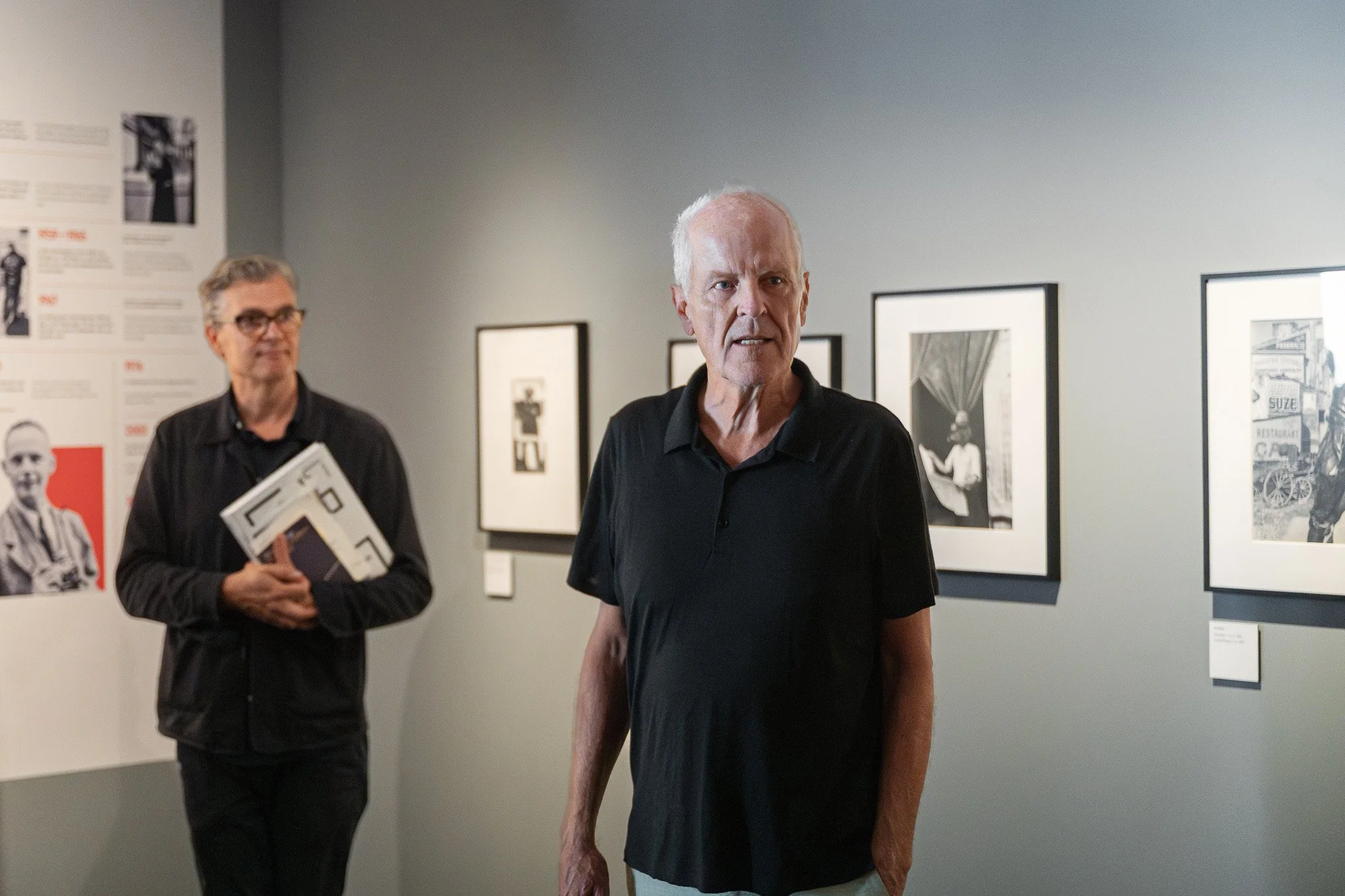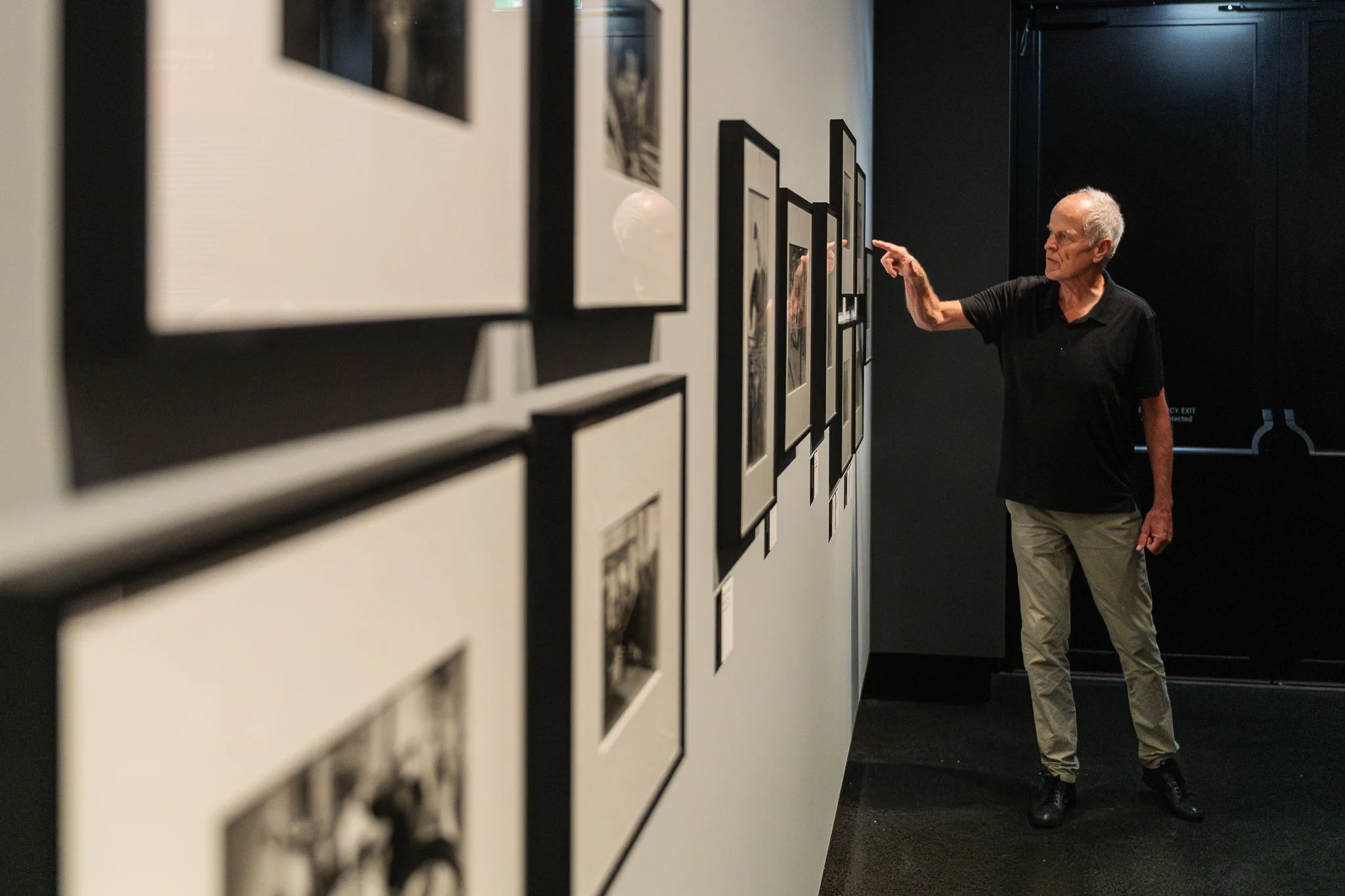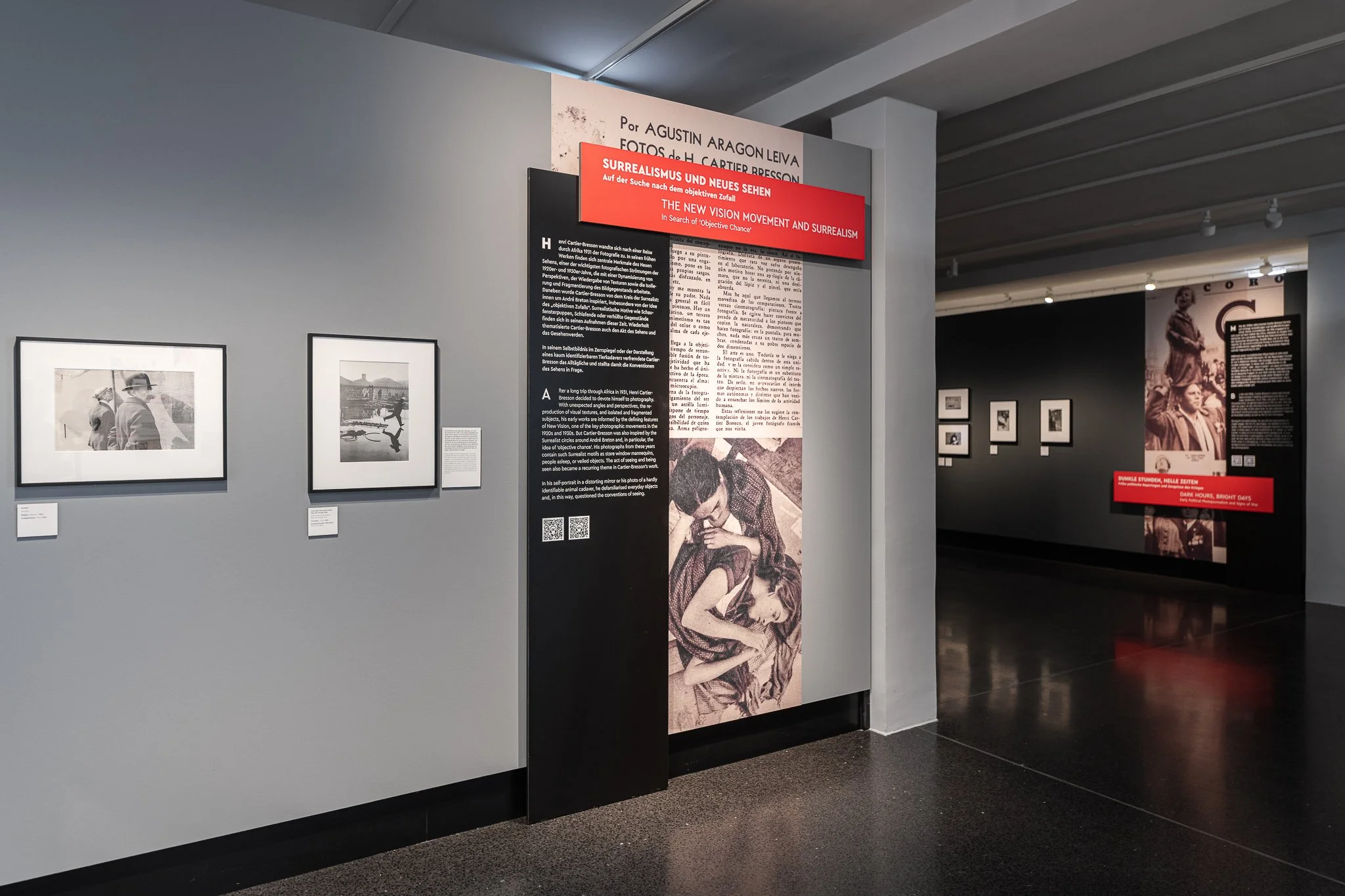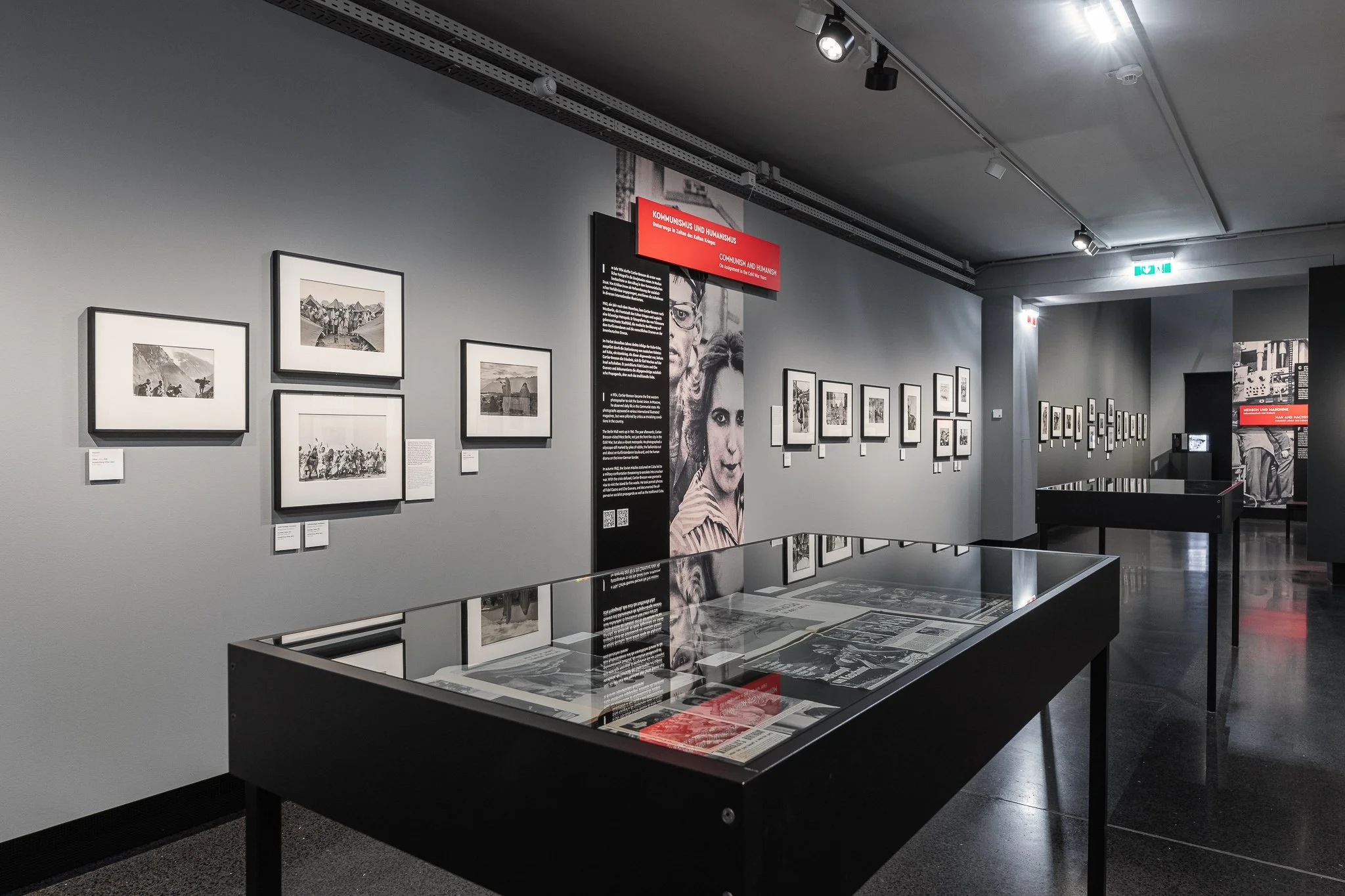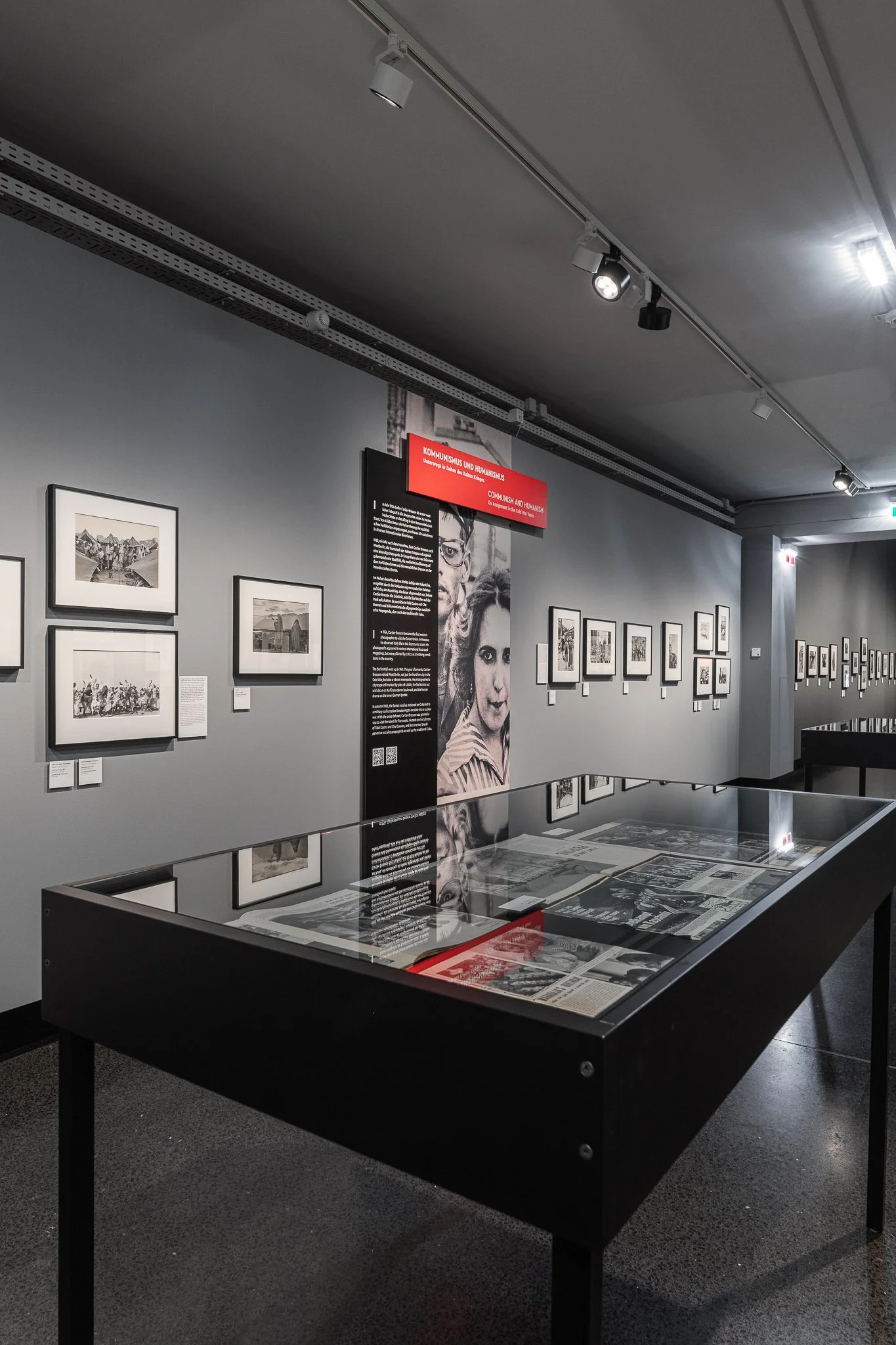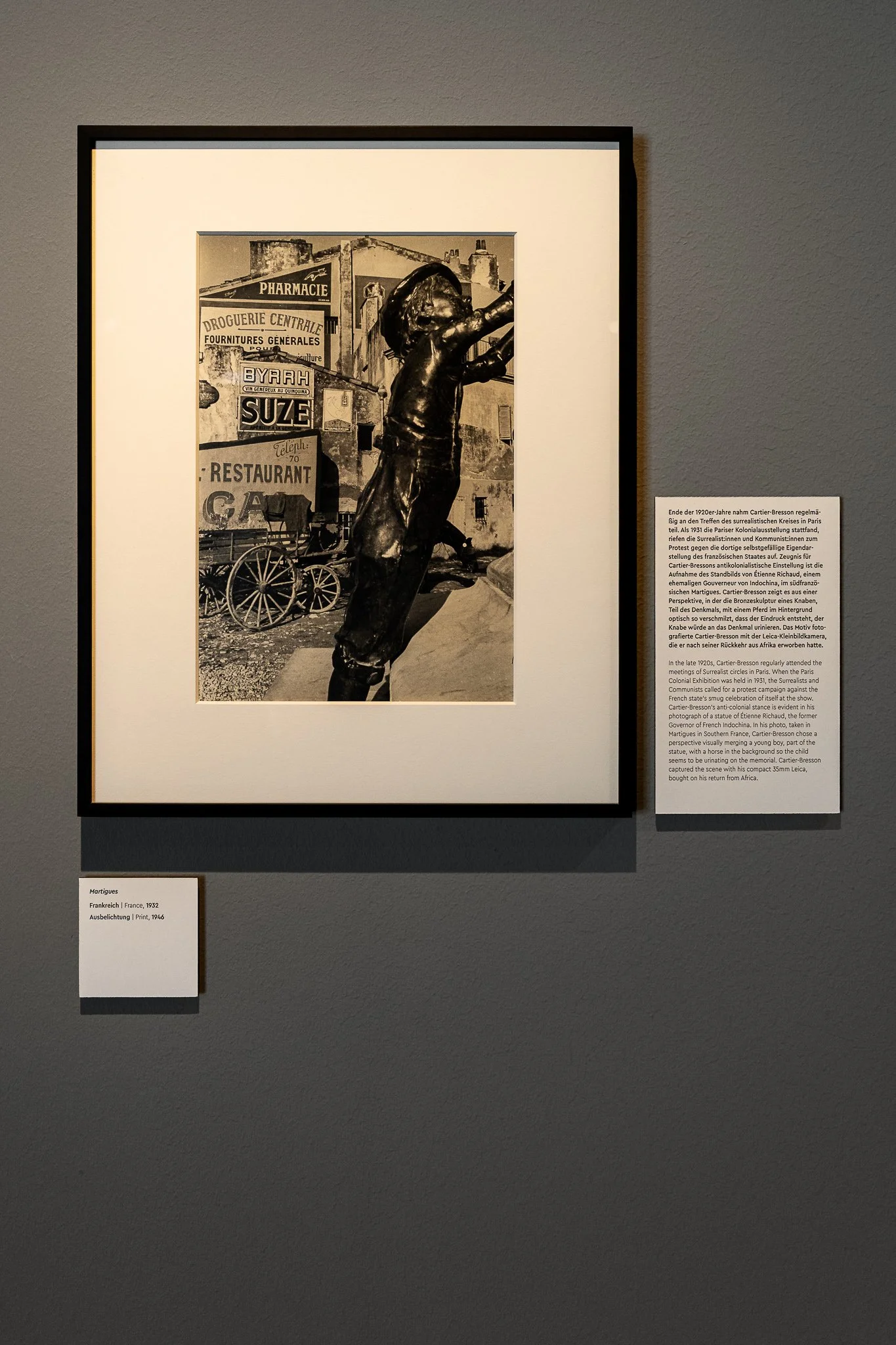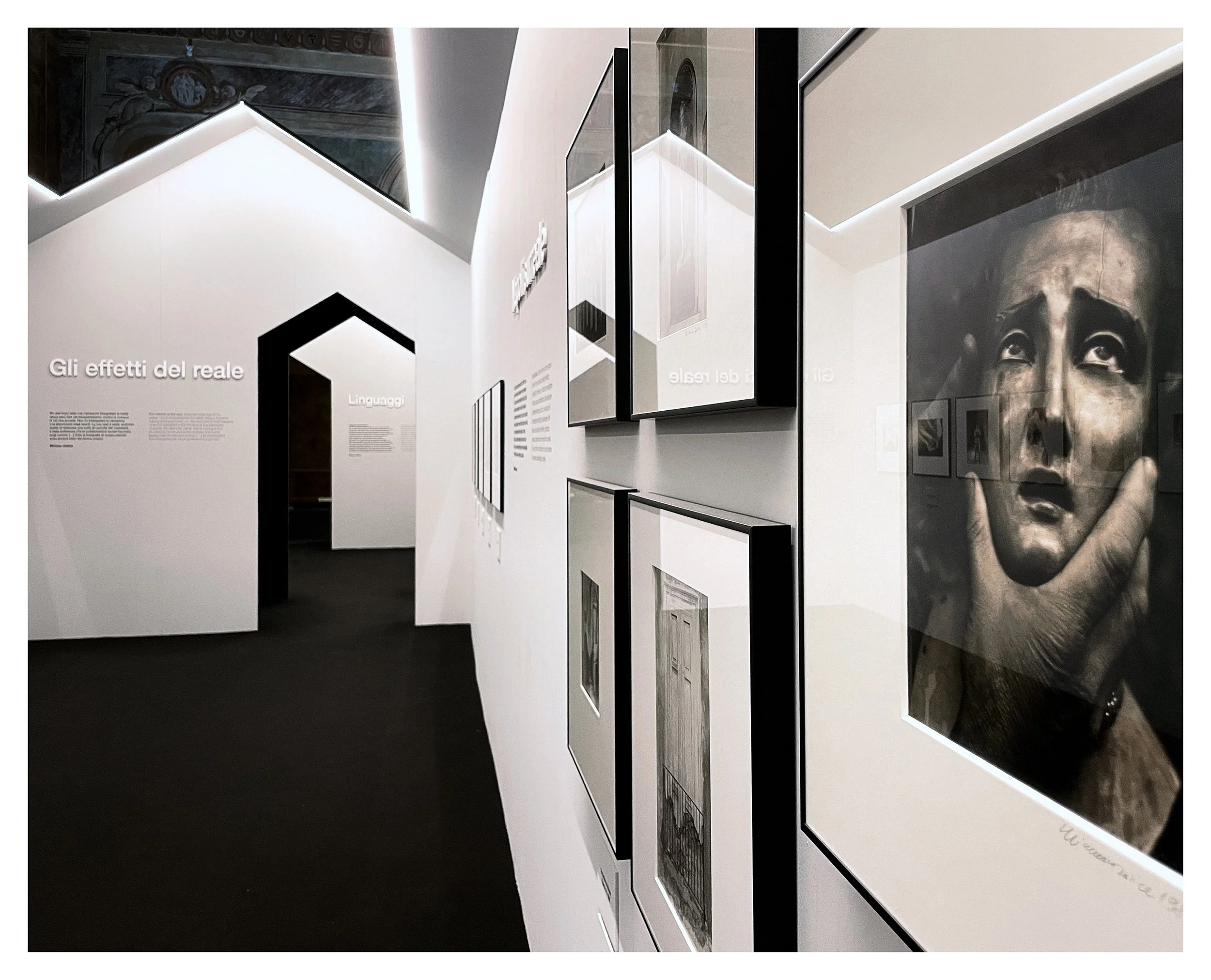I spy with a curious eye… Watch! Watch! Watch! Henri Cartier-Bresson at Foto Arsenal Wien
The exhibition “Watch! Watch! Watch!” at FOTO ARSENAL Vienna offers a richly layered retrospective of the life and work of Henri Cartier-Bresson, one of the most influential photographers of the 20th century. With around 240 original prints, along with historical magazines, photobooks, and archival materials, the show presents a broad yet detailed portrait of an artist who consistently defined - and redefined - the boundaries of photographic expression. The exhibition title refers to Cartier-Bresson’s own words: “I watch, watch, watch.”: This quote, along with the German phrase “Sehen ist alles” (“Seeing is everything”), reflects the essence of his philosophy: that perception is not passive, but a form of active engagement with the world.
Curator Ulrich Pohlmann and Felix Hoffmann, Artistic Director of the FOTO ARSENAL Vienna, © Michael Seirer Photography
Often labeled as a “street photographer,” Cartier-Bresson and his work was in fact far more complex. Over the course of several decades, he transformed both his visual style and political worldview. This exhibition -curated by Ulrich Pohlmann, former head of the photography collection at the Munich Stadtmuseum - seeks to do justice to that evolution. Rather than focusing only on the well-known early works from Parisian streets and urban settings, the exhibition presents a wide spectrum of Cartier-Bresson’s output, revealing how his photography responded to the shifting political and cultural landscapes of the 20th century.
Ulrich Pohlmann explaining details of a Henri Cartier-Bresson photo, FOTO ARSENAL Vienna, © Michael Seirer Photography
The photographs on display are on loan from the Fondation Henri Cartier-Bresson, allowing access to rarely seen prints and original materials that underscore the breadth of his artistic output. The exhibition follows both a chronological and thematic structure, guiding visitors through the different periods and modes of his work: from his early experiments influenced by Surrealism in the 1930s, to his politically charged photojournalism during the Spanish Civil War and World War II, and later, his more reflective and formal compositions in post-war Europe, Asia, and the United States.
The diversity of themes and techniques on display highlights how Cartier-Bresson’s aesthetic sensibilities matured over time, from the spontaneity of the so-called “decisive moment” to a more deliberate and structured approach to composition. In doing so, the exhibition also addresses the shifts in his political thinking—from early communist sympathies and involvement with leftist movements in the 1930s to a more nuanced, sometimes skeptical perspective on global politics in his later years. This progression is not only visible in the subjects he chose to document - ranging from revolutionary China to American industrial life - but also in his treatment of these subjects, which gradually moved away from direct action and toward reflective observation.
There is more behind his photographs than meets the eye…
“Sunday on the banks of the Seine, near Juvisy-sur-Orge” is a well known photo of Henri Cartier-Bresson: A group of workers enjoying a picknick at the Seine. But its not (only) about having fun and enjoying life, but this was possible since its actually documenting free time that was possible due to achievements of the newly-elected Popular-Front government like 40-hour-weeks and payed holidays.
The show also includes examples of his work as a founding member of Magnum Photos, where he played a central role in shaping the ethics and aesthetics of documentary photography. His collaborations with publications like Life, Paris Match, and Regards further illustrate how his images operated within - and often challenged - the boundaries of visual journalism.
Fellow photographer Walker Evans, who described Cartier-Bresson as “a true man of the eye.” This phrase captures not only Cartier-Bresson’s technical mastery, but also his intuitive grasp of visual narrative. His ability to anticipate and capture fleeting, often ambiguous human moments became a hallmark of his style, and remains a touchstone for generations of photographers.
By emphasising Cartier-Bresson’s visual intelligence, political engagement, and artistic adaptability, “Watch! Watch! Watch!” moves beyond the mythologized version of the photographer as merely a chronicler of urban life. It reveals an artist in constant dialogue with the world around him - an observer who, through decades of watching, developed a deeply personal and profoundly influential visual language. The exhibition offers a rare opportunity to witness the breadth and depth of a career that was never static, but always evolving.
The following blogpost might be interesting as well:

